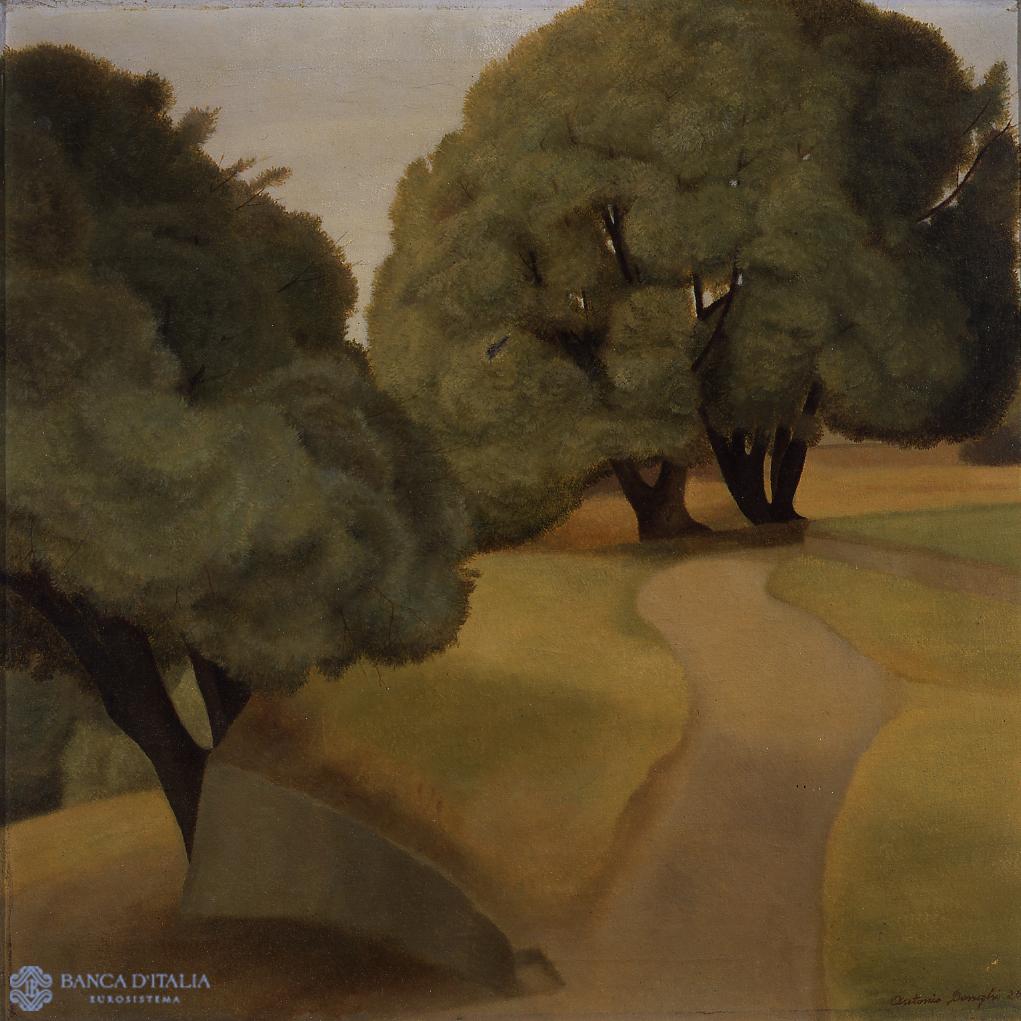Antonio Donghi (Rome 1897–1963) first exhibited in 1922, with a cityscape, as part of the show produced by the Società amatori e cultori di Belle Arti in Rome. He was immediately recognized as a significant figure on the Roman art scene, and the next year he participated in the second Biennale in Rome, with a painting hung in the same room as works by Carlo Socrate and Francesco Trombadori, the advocates of the revival of classical traditions.
He was in contact with the Valori Plastici group and its complex, articulated critique of contemporary art, and frequented the “Third Room” of the Caffé Aragno in Rome, the fulcrum of a lively series of informal but intense encounters between artists, writers, poets and art historians, notably Roberto Longhi.
His early orientation to a new figurative art, so intensely concentrated on objects as to seem almost obsessive, brought him in 1925 to participate in the German Neue Sachlichkeit group’s inaugural exhibition in Mannheim. Soon after the German critic Franz Roh used the term “magical realism” in connection with some of the artists of that “new objectivist” tendency. From then on Donghi exhibited his work in a series of successful shows in Italy and abroad, while winning acclaim from the art critic Ugo Ojetti and the musician Alfredo Casella. The term “magical realism” is perfectly suited to the Donghi’s work, which elicits in the viewer a mysterious sense of wonder at the artist’s intense, fixed gaze on slices of nature, cityscapes, scenes that would be traditionally classed as genre.
Antonio Donghi
Antonio Donghi (Rome 1897 - Rome 1963)
20th century AD



